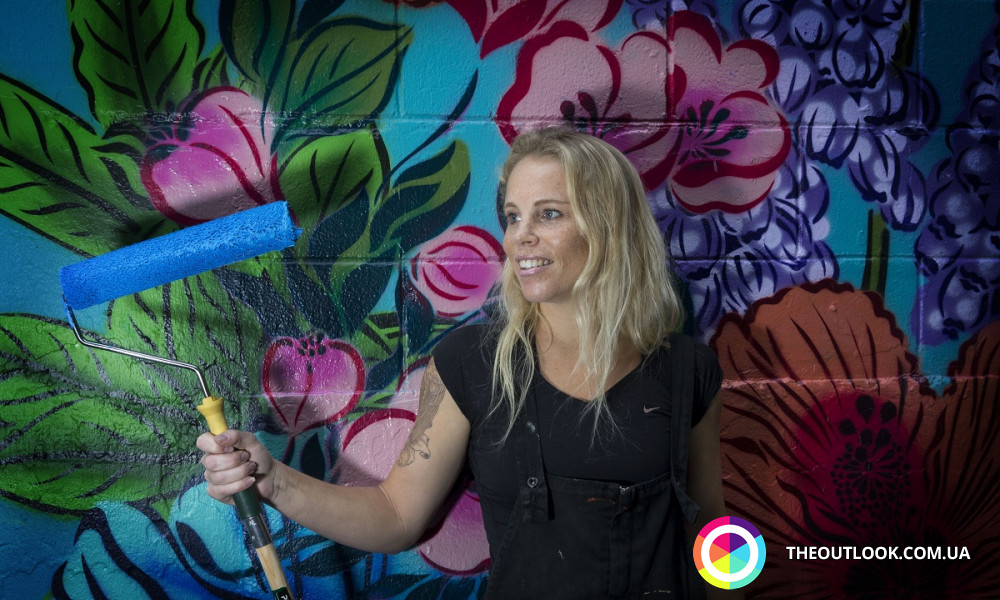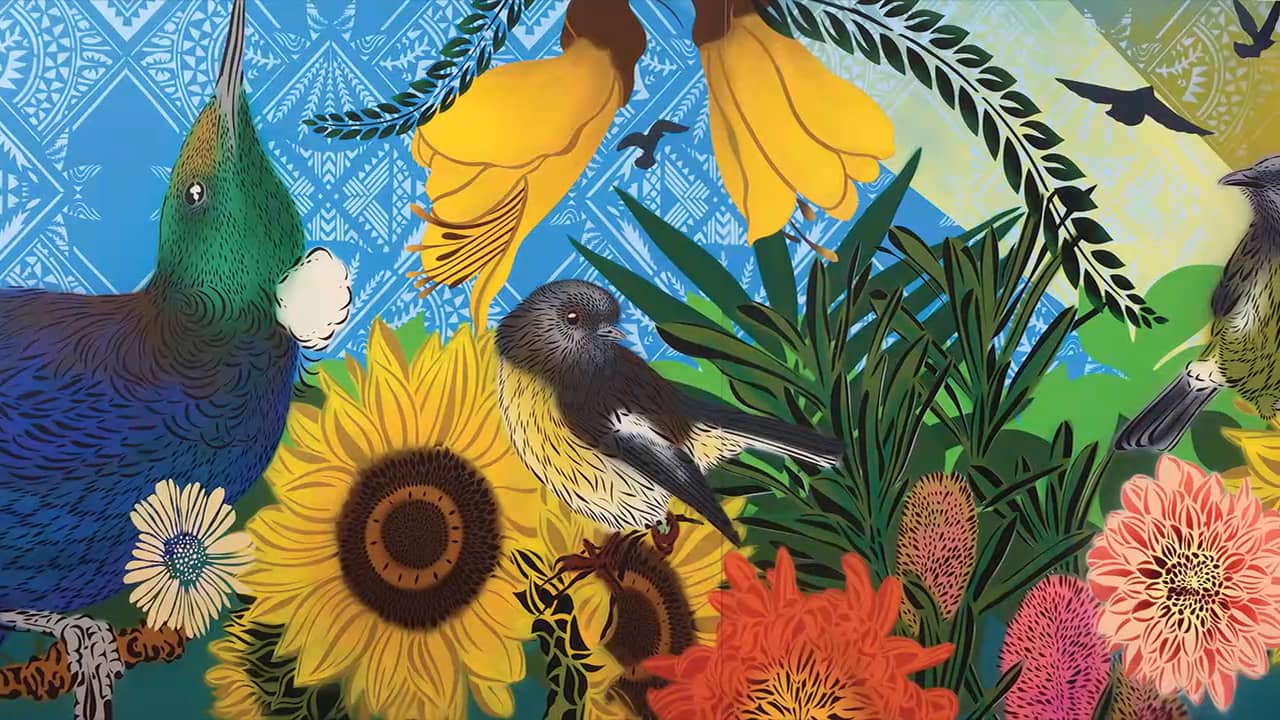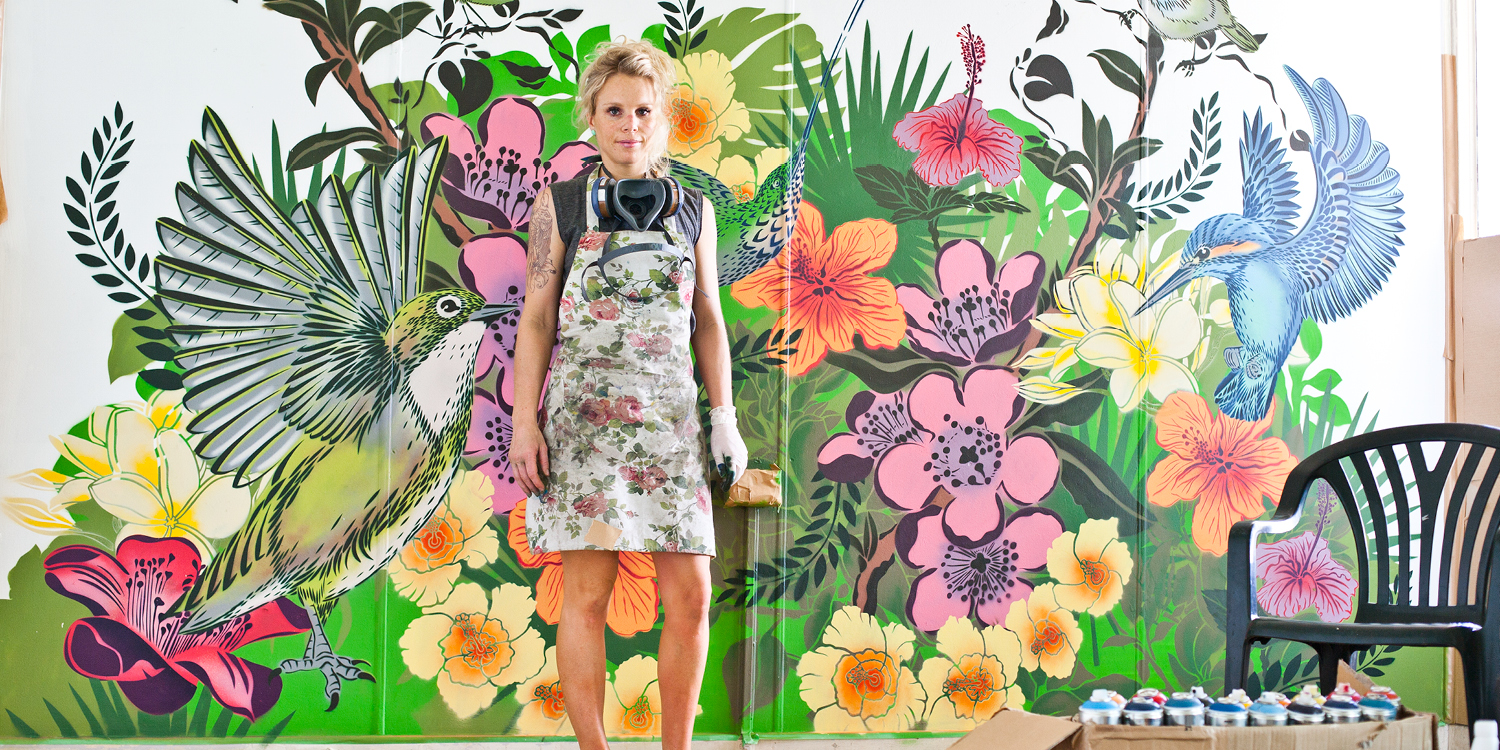Hayley King and her pictures: New Zealand on the border of beauty-new

-I read that you participated in a three month Artist Residency in Taiwan in 2015, and travelled to India. What fascinated you most while travelling?
-I view such travels as the way to enhance my practice better, to push myself into new territories in terms of creating new works. So, maybe, Ukraine could be the next… Concerning India, this country was rather challenging, actually. It was a test on all the senses, such as mouth, nose, eyes, but the biggest challenges are usually followed by the unique opportunities. I am really proud of the latest projects we have created after such an experience. As world is wide, similar trips push me forward and expand my horizons. Even though India became a hardship for me, I should have noticed people are beautiful there. We stayed in the place called Udaipur situated in Rajastan. That is an amazing little city with floating palaces and the part of Thar Desert what makes people consider Rajastan as the hugest desert in the world. As for Udaipur, it is located around some natural lakes. Certainly, the watercourses are really beautiful, as well as exciting architecture and old palaces.

Photo /i.vimeocdn.com
-How did it inspire you in the formation of exhibitions? As I know, you have launched a new exhibition dedicated to India.
-It has just been packed down, actually. The show was going in two ways, particularly, four of us were involved into Indian project. By the way, we had a truly international team! Almost all of us come from New Zealand being artists and designers collaborating to do this project, yet, mother of one of my colleague was a Ukrainian refugee who moved to New Zealand. Her daughter, Sasha, who participated in India tour, has been living in New Zealand for all her life, but, I think, she is going back to Ukraine the next year for a visit.
-Could you also tell a bit detailed about your project connected to creation of New Year bubbles with depiction of manuca flowers designed to raise funds for New Zealand hospices?
-The organizers of this project approached me two years ago, so, it has been a long time, actually, to design a Christmas bubble and proceed all the work for New Zealand hospices. We sold them to quite a big retailer here for farmers, so, I hope, they will be raising some good money for the hospices because it is a great course of action.

Photo static1.squarespace.com
-Do you face problems connected to functioning of New Zealand hospices, something referred to the governmental funding?
-The only problem is to gather money for such hospices from outside. That would be the main problem, but hospice is, basically, a place where people go to die. As far as I know (and I don’t, actually, much), they do a very good job as they organized beautiful and well-equipped places for the patients to make their days a bit better. I am convinced, like any charitable organization, we need to find ways to raise money.
-Is it hard to work with charitable organizations in New Zealand? How do you promote exhibitions similar to what you have done?
-I guess, it is hard just like anywhere. We use social media quite a lot as the leading source of information to promote projects as I have a good team of managers who rule my social media concepts. Thus, I am able to rely on them to put messages to promote exhibitions as well as the charitable projects. Generally, people are quite interested in that, especially, when it turns to charity, people really try to contribute.
-I read your blog posts where you mentioned Maori tribes and Aotearoa culture. Are you promoting this ancient culture through your works?
-Even though Maori culture is very much engrained in all the society in New Zealand, we still have a lot to deal with, perhaps, like it happens anywhere. The racism remains as the problem with cross-colonating these cultures. But, I think, we are doing very well and we are the leaders in acknowledgement of the people whom we consider as indigenous, or natives of these lands. As for me, personally, I do not have any of that blood, but I grew up in a community in a far north which had a high population of Maori people and I was surrounded by Maori culture. As wee, I have listened to Aotearoal language, so now I have a normal base for this language, but I want to go and study it better as I would like to be fluent. Consequently, as an artist, I do have to be careful because I am not Maori, yet I do like to be able to represent those aspects through my art. It is breaking down some barriers and pushing boundaries. It means to allow information about Maori’s history come to the up-to-date society, and I would love Maori culture to become more amassing to penetrate into bigger sectors of society and different cultural traditions.

flox.co.nz
-The current world of art is famous for the trend of globalization, but every nation tries to save its unique cultural heritage. How is it for New Zealand to balance on these two concepts?
-Well, we had what we call designing of the Treaty of Waitangi that happened in 1840, over one hundred years ago, when 46 chiefs of Maori signed an agreement, according to which they had to join the Great Britain. That was an acknowledgement of the lands inherent to Maori people and recognition of what belongs to them. Basically, I think, we still have our issues and we got a lot to work on, but the main principles were testified then. It gives a basic understanding and acknowledgement of working and living together in a contemporary society. Though we have a great deal of space for work, if I want to get down to comparing, I think, we have done pretty good. You know, when you look at this issue as the standing rock, the work seems to be a miracle. For instance, if you take Australia, they have aboriginals who still do suffer from unsolved problems connected with their rights. As for New Zealanders-Kiwis, or Aoteroa, we doing okay, especially taking into consideration that we are such a small island nation that creates multicultural society. In these terms, I do not talk only about Maori culture mentioning collaboration of Maori with white people. Definitely, thirty years ago it was exactly like that, but now it is a very multicultural way as we have a lot of Indian people here along with Chinese, Korean, all Asian, and we embrace to support the nations. Surely, I am not huge political person, but I do like keeping a little eye on these things. Yet, the place where I live, exactly, in central Aukland is enormously multicultural, and I love is so good. We are so used to eating delicious Chinese, Japanese, Mexican and Indian food… Aside from the food, if you would like to live a happy and prosperous life, in a contemporary world, it is about being empathetic embracing multiculturalism.
-Do you have any painting trend in New Zealand, something that gathers young people attracting them to art?
-Even though I live in a modern New Zealand, sometimes it is very hard to distinguish what is, actually, happening. That is a great push or acceptance of street-art in general that is also well-known as the public art and hip hop culture originated from New York and Portland. Now we have flocked that and made our own variant with the special name which we learn at schools as Pacific art. One does not have to study painting for this particular occasion to draw outside the street with the spiking. People love that, but there was a really significant stigma of spiking being bad, making such an art equal to something done wrong. Consequently, I have taken myself to my contemporaries aged from ten to fifteen years old to drive some of those barriers. Now general public is exceeding the spiking to notice the good it can bring. There are some artists who came through social stereotypes and made brilliant careers yet they were very lucky. To increase the number of them that is why I have been teaching workshops to guide the youth just giving them a hand as well as telling that they are able to create such an art. Additionally, in New Zealand we also have a strong entrepreneurial chance, because it is a small country where you can succeed. I mean, it is not easy to gain success anywhere, but you can really find out a good audience. If you have a good product or if you acquire a talent as well as skills to be a gifted entrepreneur, there is a plenty of high opportunities. For instance, we have what we call as DIY (do it yourself) – surely, we did it happen as we do not rely too much on others to help us through and we have such a sort of mind which I like, though it is taking a lot of time. So, I think, it is a big trend coming through the art, design industry and creative scope that it should be called as awesome.

flox.co.nz
-Could you share your creative plans for the upcoming time?
-As for what is coming nearby, I do not have any travel plans. Instead, I am going to stay here and I working on some new merchandise opportunities creating more stationery-type products. Also, I am looking at going back to apparel, so, I am doing women T-shirts, bags, singlets, etc. That is a kind of my focus for the next year. Still, let’s see what happens because a lot of opportunities can arise.





















